Abstract
Maximum flow-volume (M.F.-V.) curves for both inspiration and expiration have been obtained in healthy subjects and in patients with bullous emphysema, exacerbation of asthma, and with severe fibrosis of the lungs. The tracheobronchial collapse pattern on the conventional spirogram or the M.F.-V. curve appeared to be related to the severity of airways obstruction more than to the type of airways obstruction. The pattern was observed in exacerbation of asthma as well as in emphysema and occurred when forced expirations were started from low in the vital capacity in normal subjects. The expiratory M.F.-V. slope was normal or steeper than normal in fibrosis and was much lower than normal in asthma and emphysema. In patients with fibrosis maximum expiratory flow (M.E.F.) and maximum inspiratory flow (M.I.F.) at 50% of vital capacity were both reduced and the ratio between them was similar to that in healthy subjects. In both asthma and emphysema there was a low M.E.F.50%/M.I.F.50% ratio; the only patient with airways obstruction who had a normal M.E.F./M.I.F. ratio was a woman with tracheal stenosis. A theoretical analysis suggests that most forms of airways obstruction would be expected to lead to a greater impairment of M.E.F. than of M.I.F. The M.F.-V. curve did not help in distinguishing a patient with asthma from one with emphysema, but the changes in tracheal obstruction were distinctive.
Full text
PDF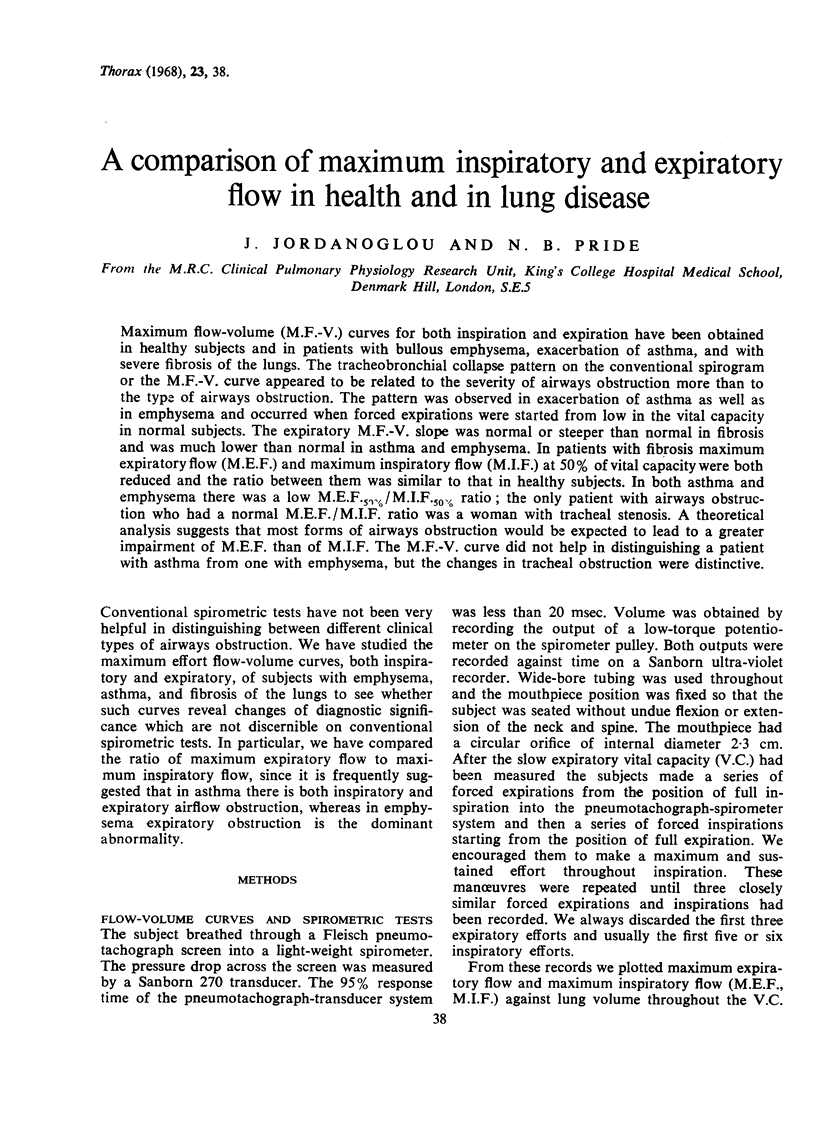
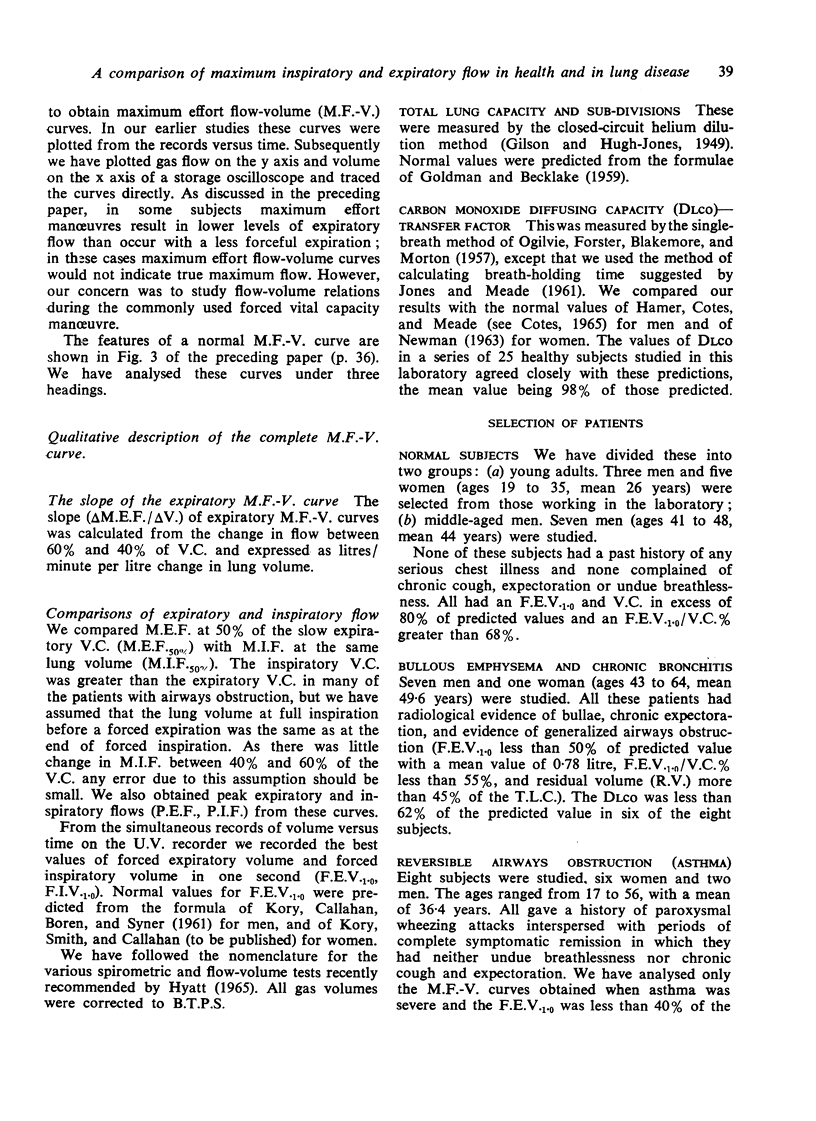
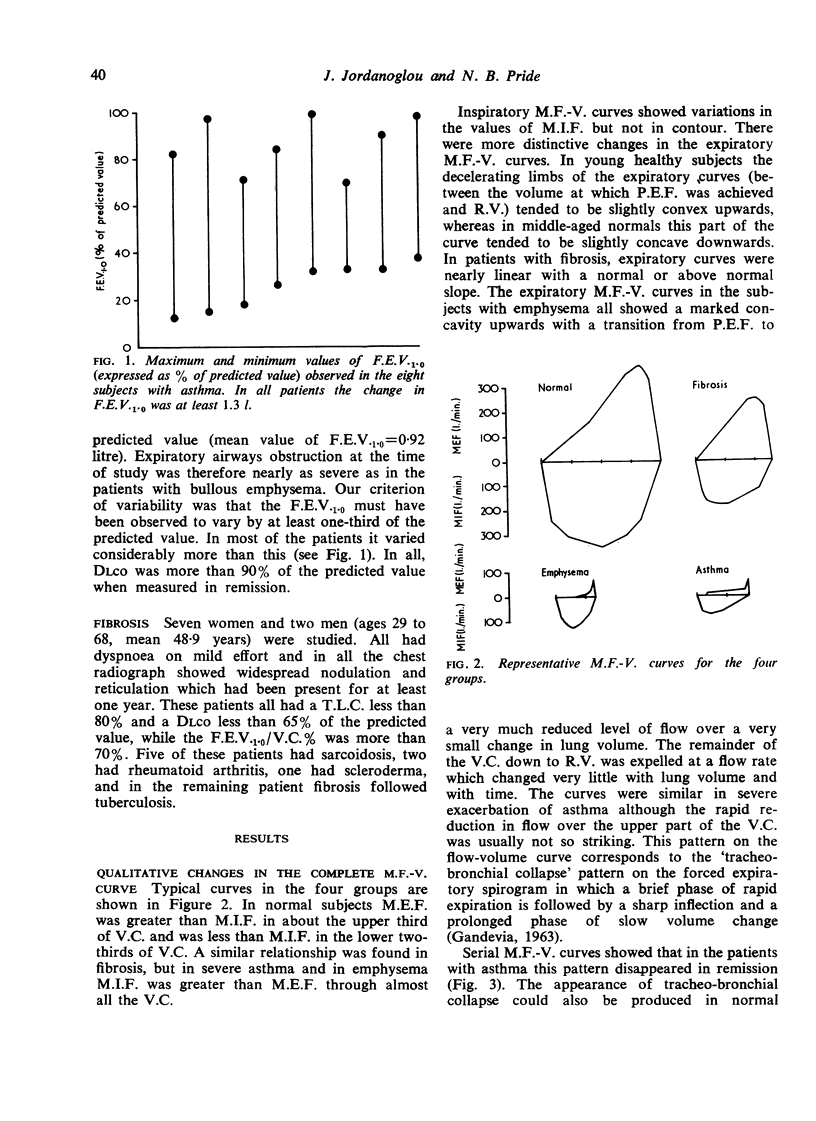
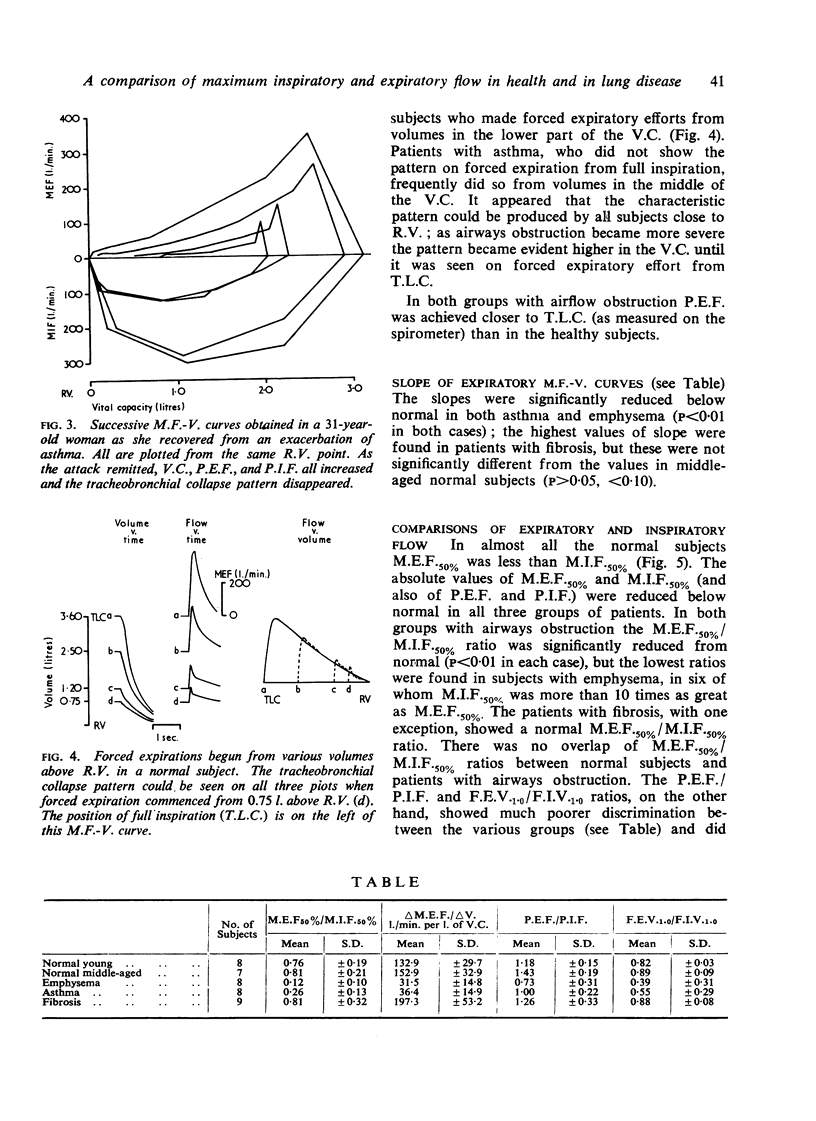
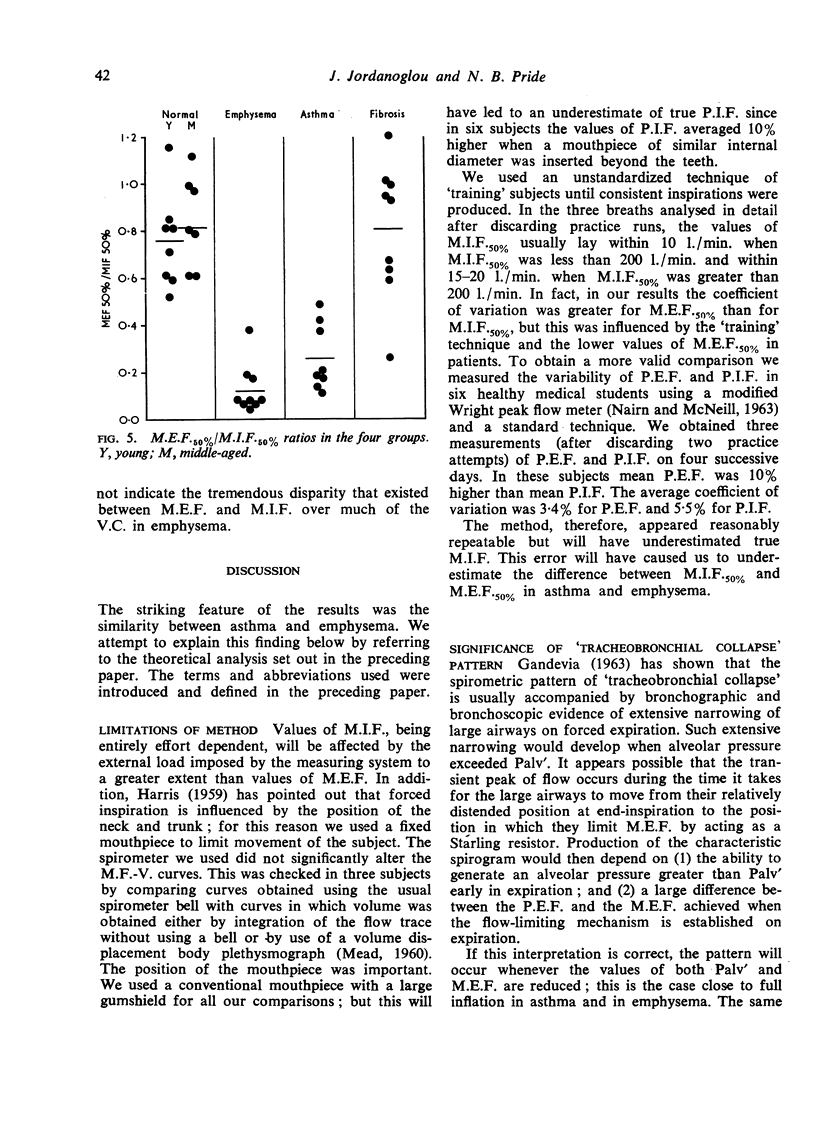
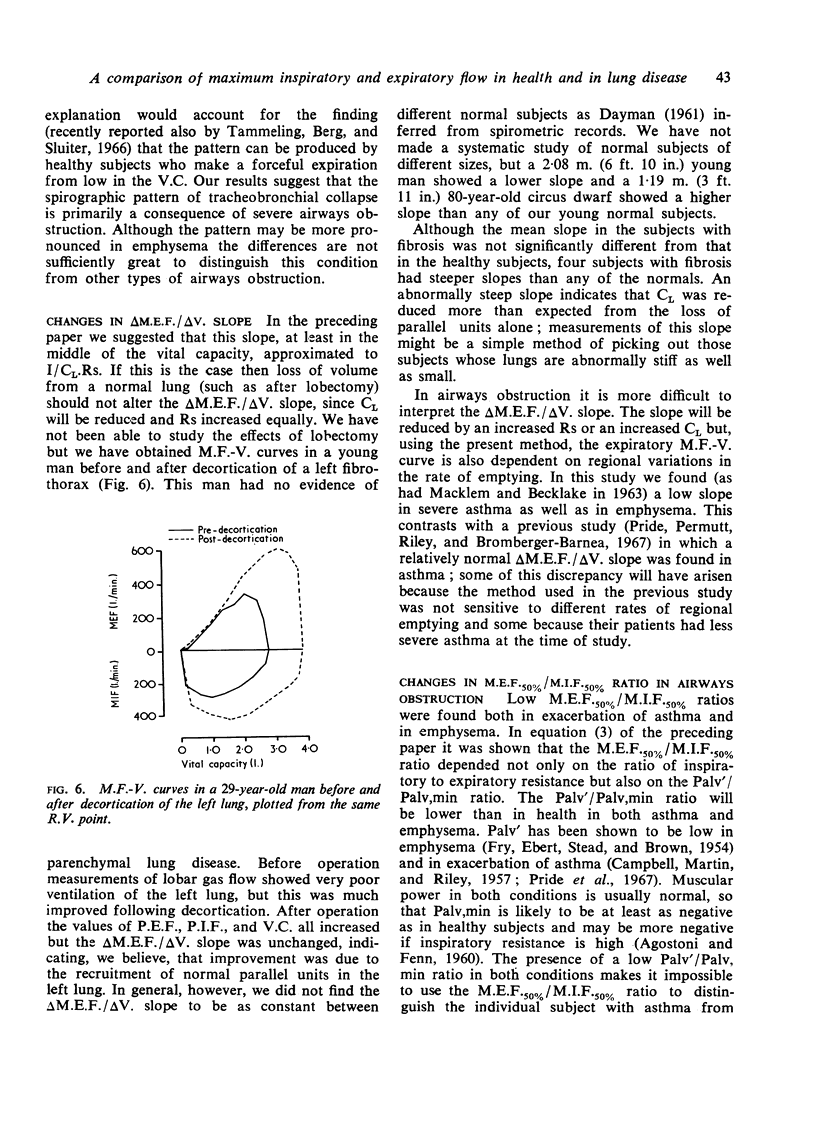
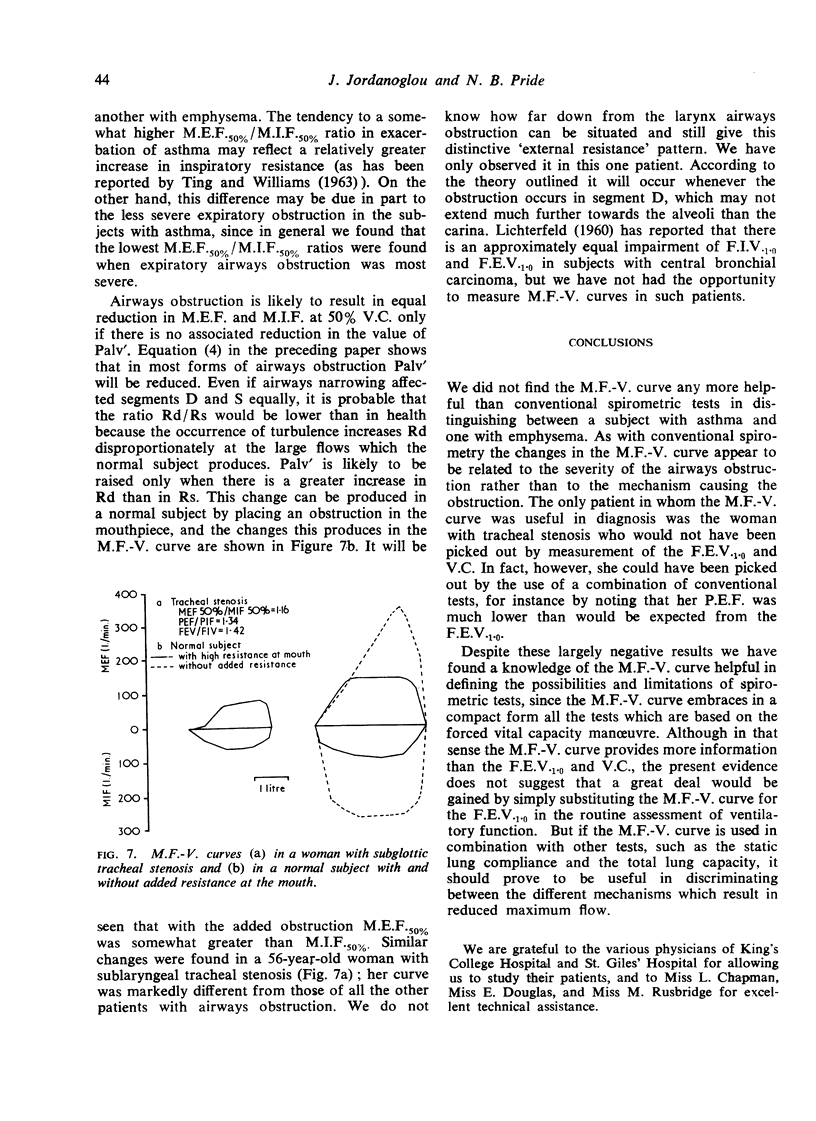
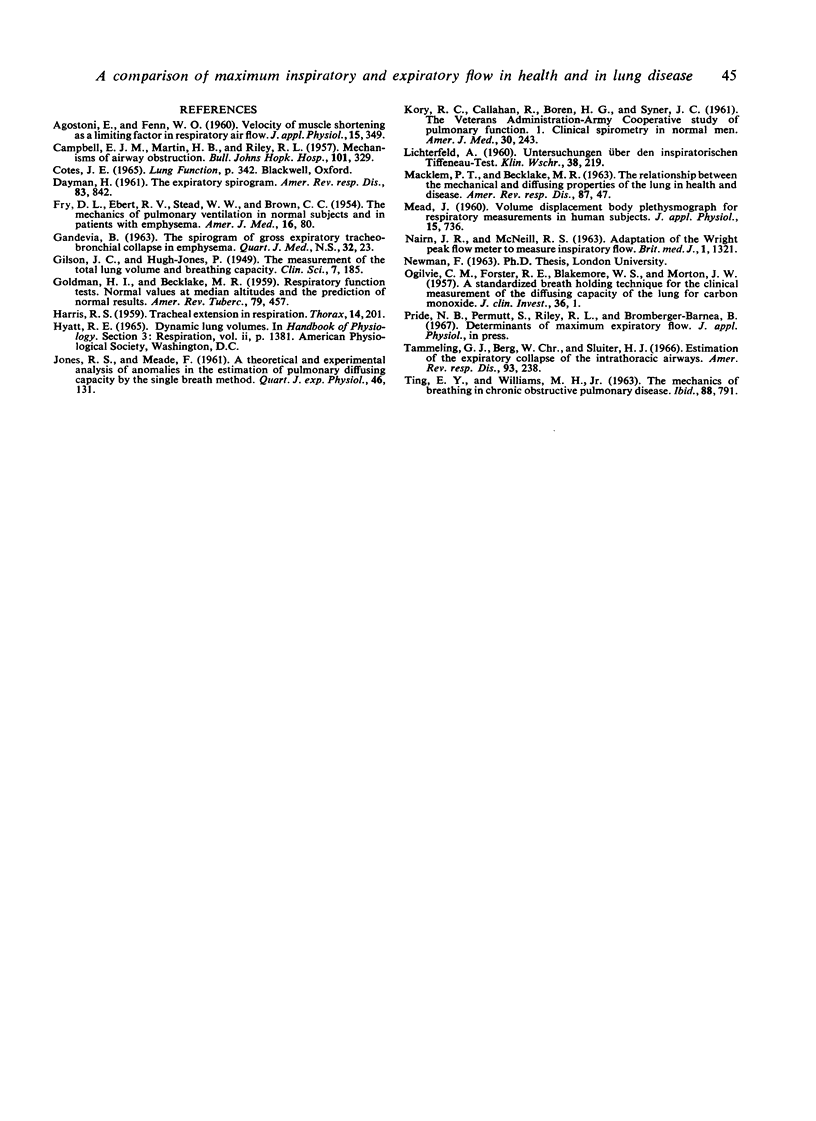
Selected References
These references are in PubMed. This may not be the complete list of references from this article.
- AGOSTONI E., FENN W. O. Velocity of muscle shortening as a limiting factor in respiratory air flow. J Appl Physiol. 1960 May;15:349–353. doi: 10.1152/jappl.1960.15.3.349. [DOI] [PubMed] [Google Scholar]
- BLAKEMORE W. S., FORSTER R. E., MORTON J. W., OGILVIE C. M. A standardized breath holding technique for the clinical measurement of the diffusing capacity of the lung for carbon monoxide. J Clin Invest. 1957 Jan;36(1 Pt 1):1–17. doi: 10.1172/JCI103402. [DOI] [PMC free article] [PubMed] [Google Scholar]
- CAMPBELL E. J., MARTIN H. B., RILEY R. L. Mechanisms of airway obstruction. Bull Johns Hopkins Hosp. 1957 Dec;101(6):329–343. [PubMed] [Google Scholar]
- DAYMAN H. The expiratory spirogram. Am Rev Respir Dis. 1961 Jun;83:842–855. doi: 10.1164/arrd.1961.83.6.842. [DOI] [PubMed] [Google Scholar]
- FRY D. L., EBERT R. V., STEAD W. W., BROWN C. C. The mechanics of pulmonary ventilation in normal subjects and in patients with emphysema. Am J Med. 1954 Jan;16(1):80–97. doi: 10.1016/0002-9343(54)90325-3. [DOI] [PubMed] [Google Scholar]
- GOLDMAN H. I., BECKLAKE M. R. Respiratory function tests; normal values at median altitudes and the prediction of normal results. Am Rev Tuberc. 1959 Apr;79(4):457–467. doi: 10.1164/artpd.1959.79.4.457. [DOI] [PubMed] [Google Scholar]
- HARRIS R. S. Tracheal extension in respiration. Thorax. 1959 Sep;14:201–210. doi: 10.1136/thx.14.3.201. [DOI] [PMC free article] [PubMed] [Google Scholar]
- JONES R. S., MEADE F. A theoretical and experimental analysis of anomalies in the estimation of pulmonary diffusing capacity by the single breath method. Q J Exp Physiol Cogn Med Sci. 1961 Apr;46:131–143. doi: 10.1113/expphysiol.1961.sp001525. [DOI] [PubMed] [Google Scholar]
- KORY R. C., CALLAHAN R., BOREN H. G., SYNER J. C. The Veterans Administration-Army cooperative study of pulmonary function. I. Clinical spirometry in normal men. Am J Med. 1961 Feb;30:243–258. doi: 10.1016/0002-9343(61)90096-1. [DOI] [PubMed] [Google Scholar]
- LICHTERFELD A. [Studies on the inspiratory Tiffeneau test]. Klin Wochenschr. 1960 Mar 1;38:219–223. doi: 10.1007/BF01481520. [DOI] [PubMed] [Google Scholar]
- NAIRN J. R., McNEILL R. S. Adaptation of the Wright peak flow meter to measure inspiratory flow. Br Med J. 1963 May 18;1(5341):1321–1323. doi: 10.1136/bmj.1.5341.1321. [DOI] [PMC free article] [PubMed] [Google Scholar]
- TING E. Y., WILLIAMS M. H., Jr THE MECHANICS OF BREATHING IN CHRONIC OBSTRUCTIVE PULMONARY DISEASE. Am Rev Respir Dis. 1963 Dec;88:791–801. doi: 10.1164/arrd.1963.88.6.791. [DOI] [PubMed] [Google Scholar]
- Tammeling G. J., Berg W. C., Sluiter H. J. Estimation of the expiratory collapse of the intrathoracic airways. A comparative study of the value of forced expirograms and flow curves in health and in obstructive lung disease. Am Rev Respir Dis. 1966 Feb;93(2):238–250. doi: 10.1164/arrd.1966.93.2.238. [DOI] [PubMed] [Google Scholar]


